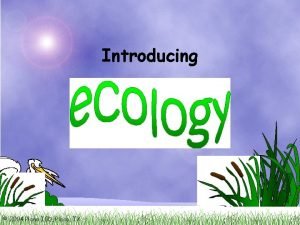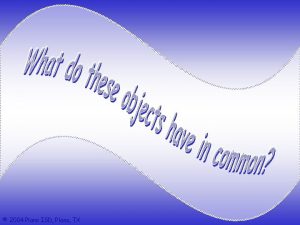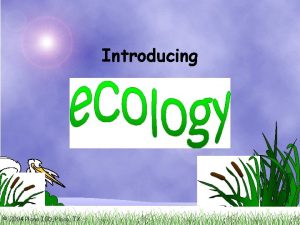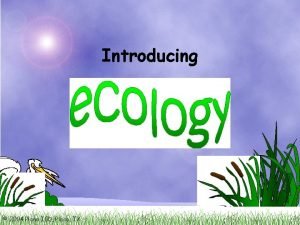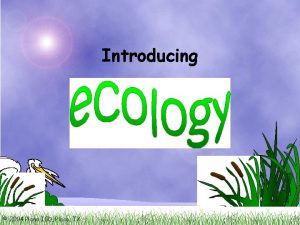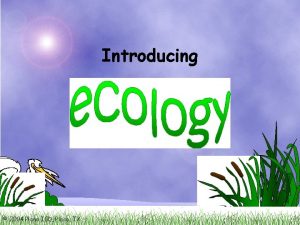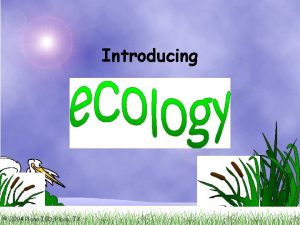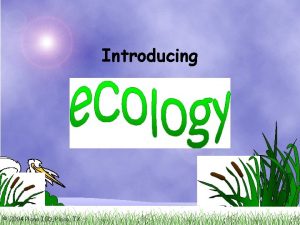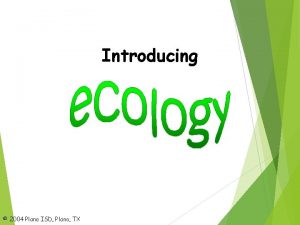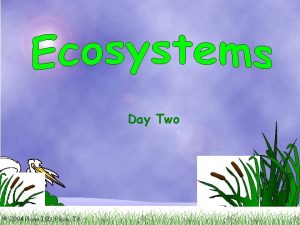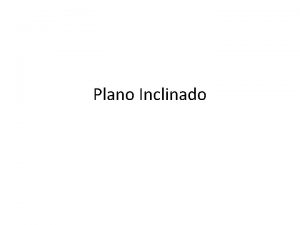Introducing 2004 Plano ISD Plano TX Chapter 18






















- Slides: 22

Introducing © 2004 Plano ISD, Plano, TX

Chapter 18. 1 Wednesday, September 5, 2012 Ms. Brown and Ms. Archie © 2004 Plano ISD, Plano, TX

Wednesday, September 5: Warm-Up Copy the following on page 18 in your IAN Chapter 18 Vocabulary 1. Ecology 6. Ecosystem 2. Biotic 7. Biosphere 3. Abiotic 8. Herbivore 4. Population 9. Carnivore 5. Community 10. Omnivore © 2004 Plano ISD, Plano, TX

Thursday, September 6: Warm-Up • Compare and contrast abiotic and biotic factors. (How are they alike and how are they different) © 2004 Plano ISD, Plano, TX

Homework Write down in your agenda… Define chapter 18 vocabulary terms DUE MONDAY!! © 2004 Plano ISD, Plano, TX

Work Session • Open your IAN to page 19 • Write the date • Title: Chapter 18. 1 - Everything is Connected © 2004 Plano ISD, Plano, TX

Ecology the study of the relationships between biotic and abiotic factors in environments eco (G) root log, -o, y eco eco climate system tourism © 2004 Plano ISD, Plano, TX home, abode (G) suffix study of epidemi climat zoology

Ecosystem includes all abiotic and biotic factors in one particular environment Biotic Factors Abiotic Factors the living parts of an ecosystem the nonliving parts of an ecosystem © 2004 Plano ISD, Plano, TX

Bio Biotic Factors include plants, animals, fungi, microorganisms bio(s), bio(t) (G) root bio bio technology mechanics bio statistics feedback biot graphy sphere logy ic bio © 2004 Plano ISD, Plano, TX life

Examples of Biotic Factors © 2004 Plano ISD, Plano, TX

A Abiotic Factors include air, water, soil, temperature, wind, source of energy (usually sun) a, an (G) prefix aabiotic musia moral toxic © 2004 Plano ISD, Plano, TX not, without

Examples of Abiotic Factors © 2004 Plano ISD, Plano, TX

Examples of Ecosystems Mountains Coral Arizona Reefin. Desert in. Colorado Belize © 2004 Plano ISD, Plano, TX

Ecosystems do not necessarily have clear boundaries due to biotic and abiotic changes can change daily as things move from one ecosystem to another Biotic Abiotic migration, seed dispersal flood, erosion, drought © 2004 Plano ISD, Plano, TX

Biotic Factors interact with each other in complex such as ways also interact with abiotic factors in the ecosystem © 2004 Plano ISD, Plano, TX parasitism mutualism competition dependent upon water, minerals, temperature, light

Levels of Organization living and all one all smallest group interacting organisms individual of unit large region all different nonliving populations of similar living of organs the living thing same cellsin with typical kinds things of to an organized kind working ecosystem living in plants and interacting tissues work one together area animals that within workinga includes certain together area several ecosystems cell © 2004 Plano ISD, Plano, TX

Organism • Each animal or living thing. © 2004 Plano ISD, Plano, TX

Populations • Each animal is a part of a population, or a group of individuals of the same species that live together. © 2004 Plano ISD, Plano, TX

Communities • A community consists of all of the populations of species that live and interact in an area. © 2004 Plano ISD, Plano, TX

Ecosystems • An ecosystem is made up of a community of organisms and the abiotic environment of the community. © 2004 Plano ISD, Plano, TX

Biosphere • The biosphere is the part of Earth where life exists. It extends from the deepest parts of the ocean to high in the air where plant spores drift. © 2004 Plano ISD, Plano, TX

Bibliography Arms. (1996). Environmental Science. Orlando, Florida: Holt, Rinehart and Winston, Inc. Mc. Laren, James E, and Rotundo, Lisa (1985). Heath Biology. D. C. Heath and Company. The American Heritage Dictionary of the English Language, Third Edition. (1992). Houghton Mifflin Company. © 2004 Plano ISD, Plano, TX
 Plano isd niche
Plano isd niche Definition of politics
Definition of politics Operational definition in psychology
Operational definition in psychology Planos en cinematografia
Planos en cinematografia Signal phrases
Signal phrases Introduction to english linguistics exercises answers
Introduction to english linguistics exercises answers 1941-1882
1941-1882 Quote explanation starters
Quote explanation starters How do you write a counterclaim
How do you write a counterclaim Introducing yourself for a job
Introducing yourself for a job Warm up introducing yourself
Warm up introducing yourself Introducing family members in french
Introducing family members in french Poetic devices
Poetic devices Introduction to the digestive system
Introduction to the digestive system Company background kfc
Company background kfc What are integers
What are integers Introducing internet
Introducing internet Quote starters
Quote starters Introducing new market offerings ppt
Introducing new market offerings ppt As he himself puts it the art of quoting summary
As he himself puts it the art of quoting summary Define upgrade advisor
Define upgrade advisor Introducing the metric system
Introducing the metric system Short bio example yourself
Short bio example yourself
